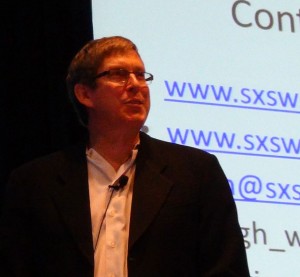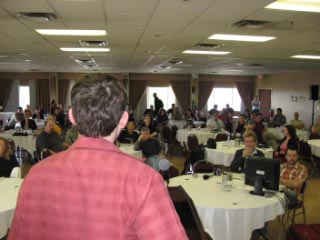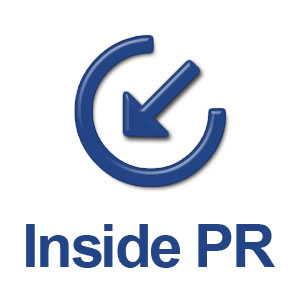With the opening of the SXSW Panel Picker to new presentation proposals, preparations are actively underway for the 2014 edition of SXSW Interactive.
SXSW is the little conference that grew and grew to be a giant festival of all that is geeky good. Why has it grown far beyond other conferences of its sort?
 One explanation may be found in the sense of community that has propelled SXSW Interactive from its earliest days. In my view, SXSWi is a conference of, by, and for the attendees.
One explanation may be found in the sense of community that has propelled SXSW Interactive from its earliest days. In my view, SXSWi is a conference of, by, and for the attendees.
Hugh Forrest, the Director of SXSW Interactive, can be seen as the embodiment of this ethos. In fact, he actively eschews his actual title of Director, saying that he prefers to think of himself as SXSWi’s Community Manager. In a recent interview for the Inside PR podcast, Forrest told Martin Waxman, “Community Manager is what most of my work is, managing this community, or trying to understand this community, trying to communicate with this community, trying to absorb all they great ideas they have. That community manager concept applies to so much I do.”
And Forrest gives full credit for the success of SXSWi to the community of participants. “I have been completely amazed at how much Interactive has grown in the past ten years and, particularly, in the past five years. When we first started this thing, it was a struggle to get people in the door. It was a struggle to figure out what we were doing and what our market was and I could never imagine that it would grow as much as it has grown. … I would love to say that it was my vision that propelled that growth. But, it’s really this community that’s pulled us forward as opposed to us trying to push them in one direction. The better we’ve become at listening to this community, engaging with this community, understanding what this community wants, polling the best ideas of the community, the more the event has grown. The more we have been able to let them pull us forward, the better this event has become.”
Forrest has a well thought-through approach to the SXSWi community, to which he attaches the PEACE acronym:
P: “Patience over profits.” Things take a while. Be prepared for it.
E: “Early buzz is good buzz.” The panel picker and community voting on presentations in July and August build anticipation of the event nine months ahead of the actual March festival dates.
A: “Acknowledge your mistakes and failures.” If you are doing something innovative, you will make mistakes. When you acknowledge mistakes, the community can be very forgiving.
C: “Customer service leads to customer advocates.” Word of mouth endorsements are still the best kind of publicity there is. The line between love and hate is a thin one. Acknowledge, respond to and help the critics. They may change their minds and become supporters.
E: “Encourage massive creativity.” Forrester does not see SXSWi as a technology event. “We are an event about creativity.” And he tries to be open to the ideas of the community that push the programming forward.
Listen to Hugh Forrest explain his perspective on the success of SXSWi using the player below. And stick around for the second half of the podcast to hear Martin Waxman, Gini Dietrich’s and my take on Forrest’s approach and building community.






